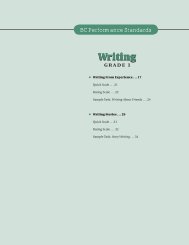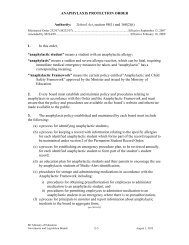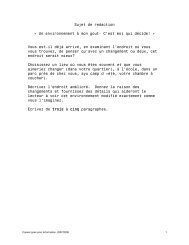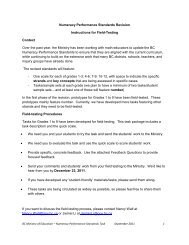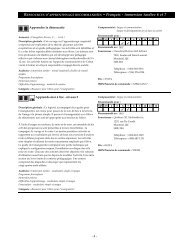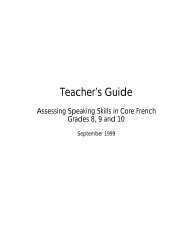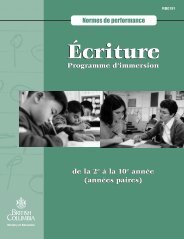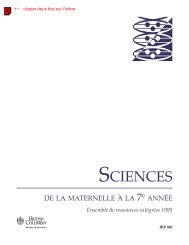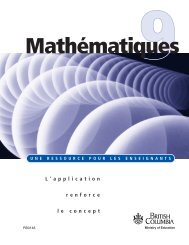A Guide for Classroom Teachers - Education
A Guide for Classroom Teachers - Education
A Guide for Classroom Teachers - Education
You also want an ePaper? Increase the reach of your titles
YUMPU automatically turns print PDFs into web optimized ePapers that Google loves.
24<br />
24<br />
Assessing, Evaluating, and Reporting on Student<br />
Progress<br />
Generally speaking, the best evidence of an ESL student’s real, developing language<br />
proficiency comes from per<strong>for</strong>mance in class. <strong>Teachers</strong> who do not have extensive<br />
experience with ESL students need to keep in mind, however, that functioning all day in<br />
a second language is exhausting and demanding, especially <strong>for</strong> beginners. Homework<br />
can take these students two to three times longer to complete. Assignments should<br />
there<strong>for</strong>e be carefully chosen to emphasize important concepts and knowledge. More<br />
work isn’t always better.<br />
Short in-class “tests” can also yield useful in<strong>for</strong>mation about students’ understanding of<br />
both subject matter and language, provided teachers:<br />
• avoid heavy reliance on multiple-choice and true/false assessment instruments with<br />
ESL students (these involve a lot of reading and often depend on comprehension of<br />
subtle shades of meaning)<br />
• provide extra time on tests <strong>for</strong> ESL students to process the questions in English, think<br />
about them in their first language, and respond in English.<br />
Functioning all day in a second language is exhausting<br />
and demanding. Homework can take these students<br />
two to three times longer to complete.<br />
Evaluating ESL students’ linguistic development on the basis of evidence gathered from<br />
class per<strong>for</strong>mance, homework assignments, and short in-class tests requires teachers to<br />
have some sense of the range of per<strong>for</strong>mances they can expect (i.e., a set of per<strong>for</strong>mance<br />
descriptors indicating different levels of linguistic ability). <strong>Teachers</strong> are free to use any<br />
system of per<strong>for</strong>mance descriptors they feel is appropriate, consistent with district policy<br />
and the practice of their colleagues in the school. The descriptors should address the<br />
four aspects of language development — speaking/listening, reading, and writing. Two<br />
sample rating instruments listing per<strong>for</strong>mance descriptors <strong>for</strong> language development<br />
have been provided on the following pages. <strong>Classroom</strong> teachers may find these helpful in<br />
identifying students who may require ESL services or in tracking the progress of designated<br />
ESL students who have been placed in their mainstream classes. Some districts<br />
have also developed their own rating instruments <strong>for</strong> teachers to use. <strong>Teachers</strong> can find<br />
out about these from their district offices.<br />
ESL ESL Learners: Learners: A A <strong>Guide</strong> <strong>Guide</strong> <strong>for</strong> <strong>for</strong> <strong>Classroom</strong> <strong>Classroom</strong> <strong>Teachers</strong><br />
<strong>Teachers</strong>




